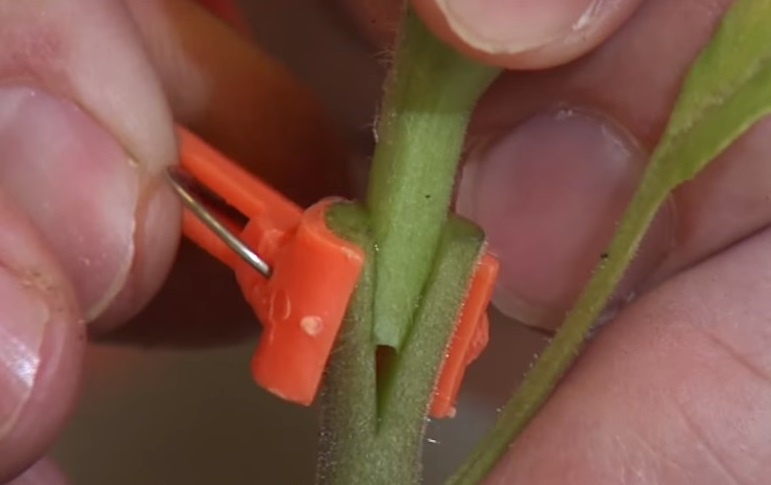We all love to garden and eat what we grow, and we are always looking to get the best crop possible. This desire led to the development of grafting vegetable plants – a method that traditional and organic producers are using. It is growing in popularity in the United States, but is already common in Europe and Asia.
What Are Grafted Vegetables?
The grafting of vegetables takes place when the Scion, or top part of a plant, is attached to the root system, or rootstock, of another vegetable plant. The process is similar to that of fruit tree grafting. The scion provides the flavor and quality of the vegetable, and the rootstock is chosen for disease resistance and vigor. This grafting is supposed to improve the plant in many ways.
Benefits of Grafted Vegetables
Grafted vegetables are known for improved yields — with most being a 50 percent increase — and an improvement in the overall health of the crop. Harvests of grafted vegetables can be larger in both quantity and fruit size. Many of them fight of pests and disease better than non-grafted vegetables, and they don’t need as much heat in greenhouses.
Several soil-borne diseases are also avoided, which is great for areas where rotation is difficult. Grafted vegetables have a high cold tolerance, and increased nutrient and water intake.
Planting
If you have the opportunity to get grafted plants, there are a few simple things to know. You don’t want to put any pressure on the graft or bend it, so make sure you plant the graft above the soil line. Staking will help by adding security to the plant. Remember to remove any suckers that may grow anywhere below the graft.
Need Non-GMO Heirloom Seeds? Get Them Right Here! [2]
You may plant grafted vegetables because they can be harvested earlier, but keep in mind these plants can still have some problems. Diseases and insects that affect the leaves can still come and wreak havoc on a crop. Don’t worry: These pests can easily be handled the same way you would with any other plant.
You also may have to do the grafting yourself, as some places sell only the rootstock and you will have to learn to attach the scion yourself.
Story continues below video
Some Grafted Examples
If you are wondering if grafted vegetables would fit into your gardening lifestyle, here are some ideas to help you decide. The list of available grafted vegetables is long, so don’t feel shy about asking questions at your garden center or doing some research before you start your vegetable shopping.
- Grafted tomatoes can be planted two to four weeks later than usual, but grow fruits longer. Some varieties of grafting tomatoes are Beaufort, Emperador and Maxifort. Beaufort is a standard and sturdy rootstock, whereas Emperador is new to the rootstock scene.
- One example of a grafted pepper is the Wonder Bell. It takes about 70 days to mature and is considered highly disease-resistant. This type of pepper has a sweet flavor and a vibrant red color. It is often used in salads, sandwiches and grilling.
- Ketchup and Fries Plant. Yes, that’s right, there is a plant called Ketchup and Fries. Can you guess what it is made from? This is a plant where tomatoes and potatoes grow on the same plant. It was first grafted in the United Kingdom. Ketchup and Fries does well in a container or in the ground. The tomato part of the plant comes as cherry tomatoes. The potatoes, of course, grow underground. Tomatoes are actually part of the potato family, so that’s one reason these two crops grow so well together.
As always, do your research, ask questions and enjoy the experience.
Have you ever grafted a plant? Share your tips in the section below:
There Are 8 Reasons Heirloom Seeds Are Simply Better. Read More Here. [3]
